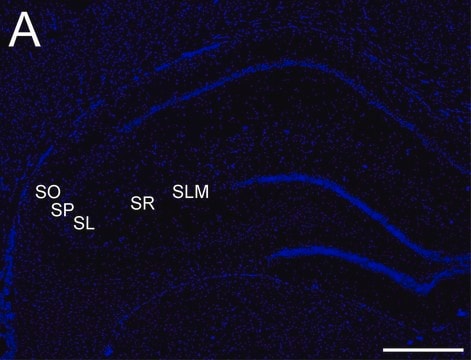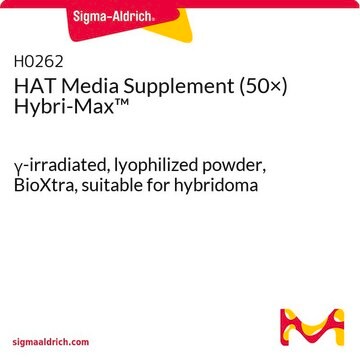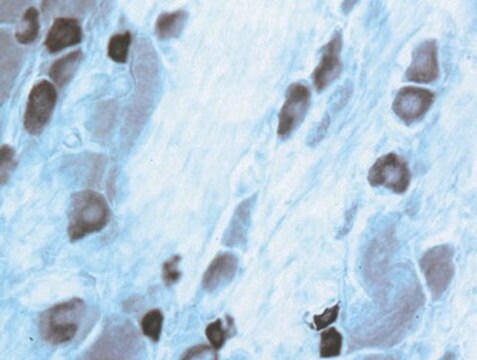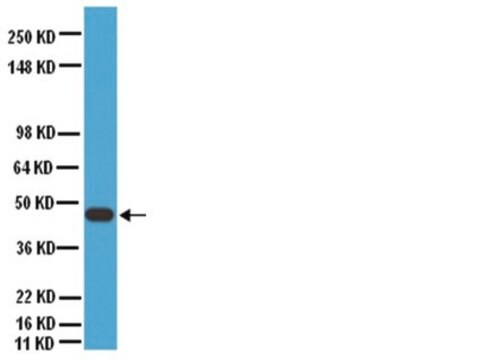MAB3100
Anti-Connexin 45 Antibody, near CT, cytoplasmic, clone 8A11.2
clone 8A11.2, Chemicon®, from mouse
Synonym(s):
Cx45, Gap Junction gamma-1 protein, Gap Junction alpha-7 protein, Cx-45, GJA7 protein, GJC1 protein
About This Item
Recommended Products
biological source
mouse
Quality Level
antibody form
purified immunoglobulin
antibody product type
primary antibodies
clone
8A11.2, monoclonal
species reactivity
dog (Wang, et al 2001), rabbit (Chaytor, et al 2005), chicken (Elenes, et al 2001), mouse, human, rat (Sorensen, et al 2008)
manufacturer/tradename
Chemicon®
technique(s)
immunocytochemistry: suitable
immunohistochemistry: suitable
western blot: suitable
isotype
IgG1
UniProt accession no.
shipped in
wet ice
target post-translational modification
unmodified
Gene Information
dog ... Gjc1(490936)
human ... GJC1(10052)
mouse ... Gjc1(14615)
rat ... Gjc1(266706)
General description
Specificity
Immunogen
Application
Immunohistochemistry: fresh frozen, methanol fixed sections {Ujiie H et al (2003)}; 4% fixed frozen sections {Ikeda, Y et al 2007). 1-10 µg/mL with overnight incubations; 4% PFA fixed, paraffin-embedded sections {Gluhak-Heinrich, J et al 2007}, 1:50 with enzymatic detection.
Immunocytochemistry: 2% PFA fixed cells (15’, RT), permeabilized with a solution of 0.2% triton X-100/4% BSA {Sorensen et al 2008}.
Optimal working dilutions must be determined by end user.
Cell Structure
Adhesion (CAMs)
Physical form
Storage and Stability
Analysis Note
Cardiac tissue, particularly sinoatrial tissues.
Other Notes
Legal Information
Disclaimer
Not finding the right product?
Try our Product Selector Tool.
Storage Class Code
10 - Combustible liquids
WGK
WGK 2
Flash Point(F)
Not applicable
Flash Point(C)
Not applicable
Certificates of Analysis (COA)
Search for Certificates of Analysis (COA) by entering the products Lot/Batch Number. Lot and Batch Numbers can be found on a product’s label following the words ‘Lot’ or ‘Batch’.
Already Own This Product?
Find documentation for the products that you have recently purchased in the Document Library.
Our team of scientists has experience in all areas of research including Life Science, Material Science, Chemical Synthesis, Chromatography, Analytical and many others.
Contact Technical Service








